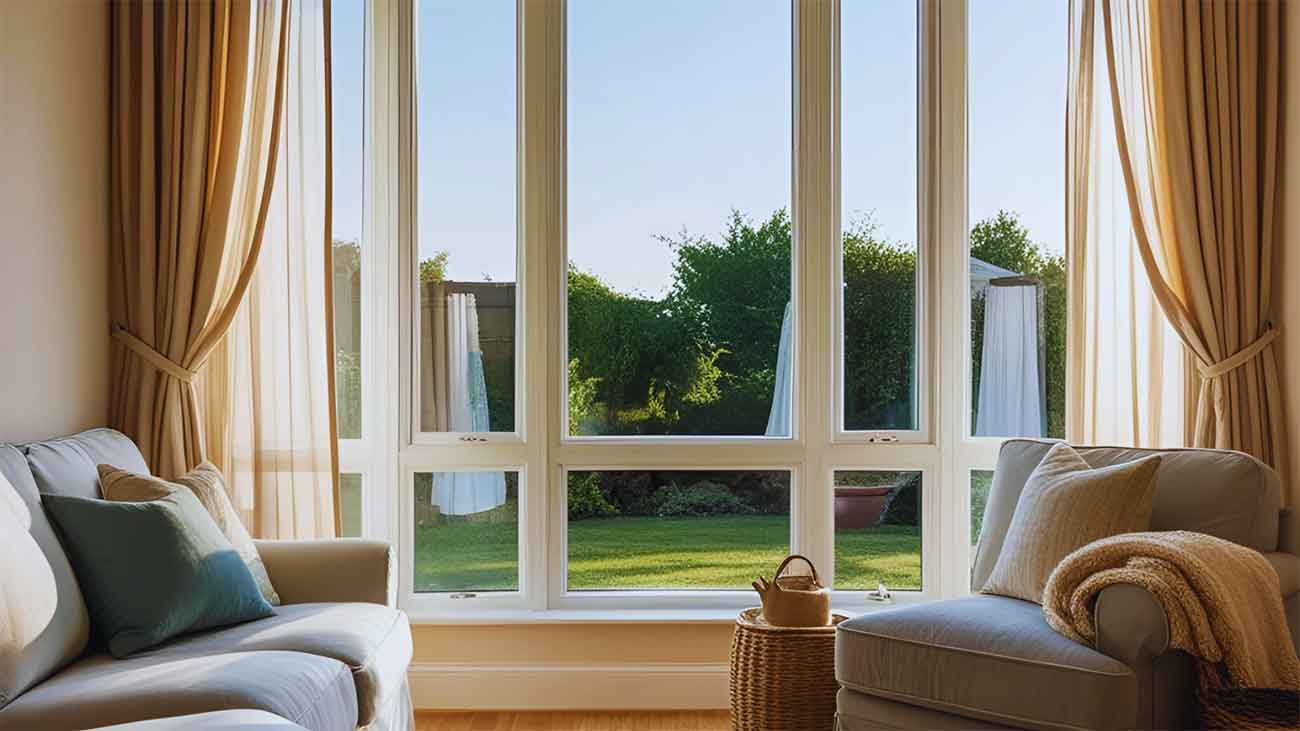Home window tinting enhances your home’s comfort, security and aesthetic. Whether you’re seeking to reduce glare, improve energy efficiency or safeguard your interiors from UV damage, professional residential window tinting offers numerous benefits. This guide will walk you through each step of the process, helping you understand what to expect from the initial consultation and the long-term benefits of professionally installed window films.
Initial Consultation and Evaluation
The consultation and evaluation phase is essential before embarking on a home window tinting project to ensure the best outcomes. During this process, the tinting professional assesses your specific needs and offers guidance on the appropriate films to meet your goals.
What Is the First Step in Home Window Tinting?
The process begins with a consultation, during which the tinting expert evaluates your home. They measure the windows and discuss your objectives, whether it’s blocking heat, enhancing privacy or preventing fading. Based on this assessment, a professional will suggest the right solar film for home windows, home window security film or decorative home window film. For instance, 3M™ Sun Control Films may be recommended for energy savings, while 3M™ Safety & Security Films could be ideal for added protection against break-ins.
What Do Professionals Do to Prepare for Tinting?
Although the homeowner doesn’t need to do much preparation, the tinting professionals handle all the work. The technicians carefully clean the windows to ensure the film adheres well and is free from dust or debris. They may also inspect the glass for any existing issues. Depending on the room or the window’s exposure, they’ll choose the most suitable solar window film, ensuring optimal performance for your home. For instance, if you want to reduce solar heat in a living room with large windows, a 3M™ Sun Control Film could be the perfect choice.
Materials and Film Selection Process
The right materials and film selection are essential for achieving the desired effects of your home window tinting project. With numerous options available, the selection process ensures you receive a product that aligns with your goals.
What Materials Are Used for Window Tinting?
High-quality materials like 3M™ films are commonly used for residential window tinting due to their durability, versatility and performance. These films provide homeowners with a wide range of benefits, from enhancing comfort to boosting security and adding a decorative touch. Let’s look at the key types of 3M™ window films that can be applied to your home:
- 3M™ Solar Film for Home Windows
Designed to block up to 78% of solar heat, 3M™ Solar Films help maintain a comfortable indoor temperature by reducing heat gain during the summer months. These films also reject up to 99% of harmful UV rays, protecting your furniture, flooring and artwork from fading. With their excellent heat rejection and glare reduction capabilities, these films help create a more energy-efficient home while preserving your view of the outside. - 3M™ Safety & Security Film
3M™ Safety & Security Films enhance the durability and strength of your windows. They help prevent glass from shattering during impacts, protecting your home from break-ins, storms or accidents. By holding shattered glass in place, these films significantly reduce the risk of injury and property damage, making them an ideal choice for added security. - 3M™ FASARA™ Decorative Films
If you want to add style and privacy to your home, 3M™ FASARA™ Decorative Films are a perfect solution. These films are available in a variety of patterns and textures, providing a sophisticated look while maintaining natural light. Whether you want frosted glass, etched designs or decorative accents, 3M™ FASARA™ allows you to customize your windows to suit your personal taste and enhance your home’s aesthetic appeal.
Each of these 3M™ films is designed to deliver long-lasting performance and comes with a manufacturer-backed warranty, ensuring that you receive the highest-quality materials for your home window tinting project.
Will Window Tint Affect My View?
High-quality window films are designed to enhance privacy without obstructing the view. Products like the 3M™ Sun Control Prestige Series provide excellent heat reduction and UV protection while ensuring clarity. This allows natural light to fill your space without the negative effects of glare. Whether in a home with expansive glass windows or smaller window installations, these films ensure that you benefit from all the advantages of window tinting, such as reduced glare and improved energy efficiency, while still enjoying unobstructed views.
Professional Installation Step by Step
Proper installation is essential for the film to function as intended. Here’s a detailed breakdown of what happens during professional window tinting installation, ensuring the process is seamless and effective.
Is Professional Installation Necessary for Window Tinting?
Professional installation is highly recommended to ensure that the window tinting is applied correctly and that the film performs as intended. Although DIY kits are available, they often lead to poor adhesion, air bubbles or uneven application. Experienced professionals have the right tools and knowledge to ensure that the solar film for home windows is installed smoothly and precisely. They also ensure that the film is properly trimmed and applied without damaging the glass.
How Long Does the Tinting Process Take?
The installation process typically takes a few hours, depending on the number of windows and the type of film chosen. For example, applying 3M™ Sun Control Films to a home with multiple large windows may take longer than tinting smaller, more straightforward windows. The technician will prepare the windows by cleaning them thoroughly, applying the film and trimming them to fit. Afterward, the film will need time to cure, which can take a few days to two weeks.
Post-Installation Expectations and Timeline
Once the home window security film or decorative home window film is installed, you should expect a few things in the following days and weeks. This phase covers the curing process, any initial effects and how to maintain your windows.
What Should I Expect After the Film Is Applied?
After applying the window film, you may notice that the windows appear cloudy or hazy. This is a temporary effect as the film begins to cure. During this time, avoiding touching or cleaning the windows is essential to ensure the film bonds securely to the glass. In the following days, the haze will clear, leaving your windows flawless and providing all the benefits of home window tinting.
How Do I Maintain Tinted Windows?
Maintaining tinted windows is simple and requires little effort. To keep your solar film for home windows in top condition, clean the windows with a soft cloth and a non-abrasive cleaner. Avoid using harsh chemicals or abrasive sponges, as these can damage the film. Regular maintenance ensures the longevity of the tint, preserving its protective qualities, such as UV and heat rejection.
Long-Term Benefits and Considerations
Investing in residential window tinting provides substantial long-term advantages for homeowners, including enhanced comfort, privacy and safety. Here’s why it’s worth the investment.
What Are the Benefits of Home Window Tinting?
Home window tinting offers numerous benefits. It significantly reduces heat and glare, making your home more comfortable year-round. Solar film for home windows also helps maintain a steady indoor temperature by blocking out harmful UV rays, protecting your furniture and flooring from fading. Furthermore, it adds an extra layer of privacy without the need for heavy drapes or shades, allowing you to enjoy natural light without sacrificing comfort or security.
Can I Apply Window Tint Myself?
While DIY window tinting kits are available, applying the tint yourself can lead to unsatisfactory results. Professional installation ensures the job is done correctly, maximizing the benefits of residential window tinting. Professionals know how to avoid air bubbles, ensure proper adhesion and ensure the tint provides the expected performance. For the best outcome, especially if you’re looking to install home window security film or decorative home window film, hiring professionals is crucial.
Why Choose Experts for Your Window Tinting Needs
Home window tinting can initially seem overwhelming, but understanding the steps involved can make the experience much more manageable. From the initial consultation to post-installation care, each phase plays a crucial role in ensuring your windows are protected and your home is more comfortable. Choosing professional installation and the right 3M™ window films is vital for achieving long-lasting benefits.
Regarding residential window tinting, EDH Film Group ensures you get the highest quality service. With our expertise and access to top-rated 3M™ films, we offer a range of solutions tailored to meet your specific needs, whether you’re enhancing comfort, privacy or security in your home. By choosing us, you’re investing in a service that guarantees the proper installation of films like the solar film for home windows, home window security film and decorative home window film for both aesthetics and functionality.
Ready to improve your home’s energy efficiency, security and style? Contact EDH Film Group today to schedule a consultation for residential window tinting and discover how the right window film can enhance your living space.




